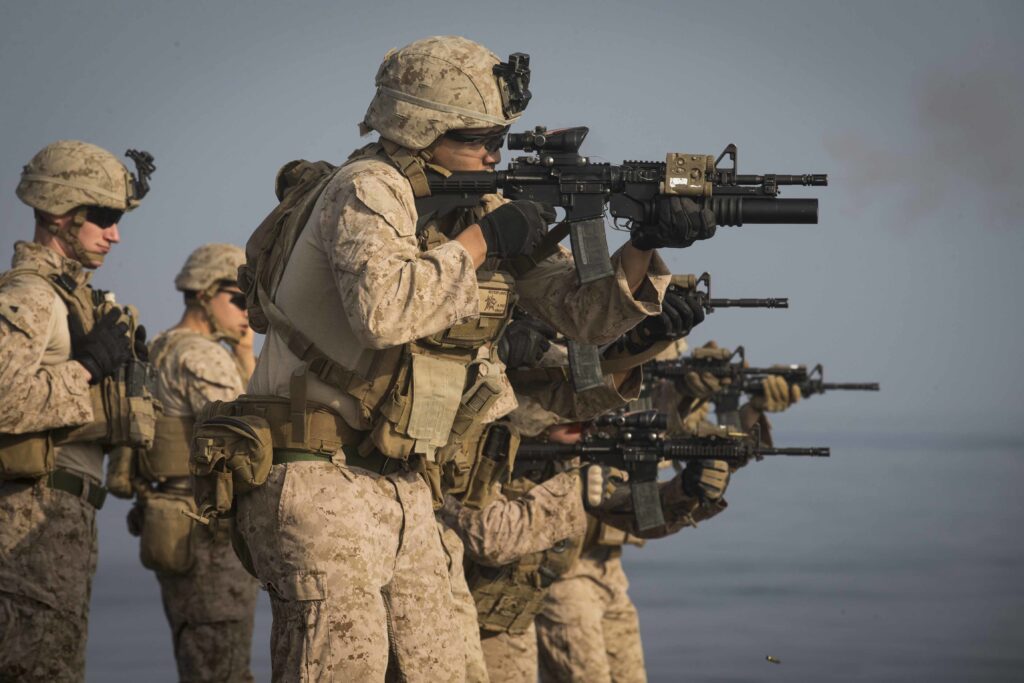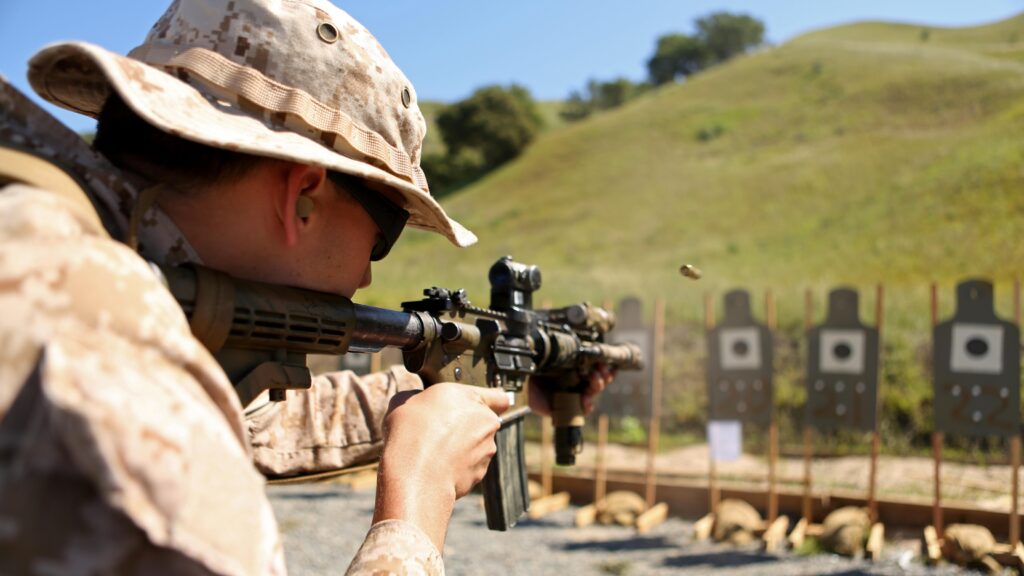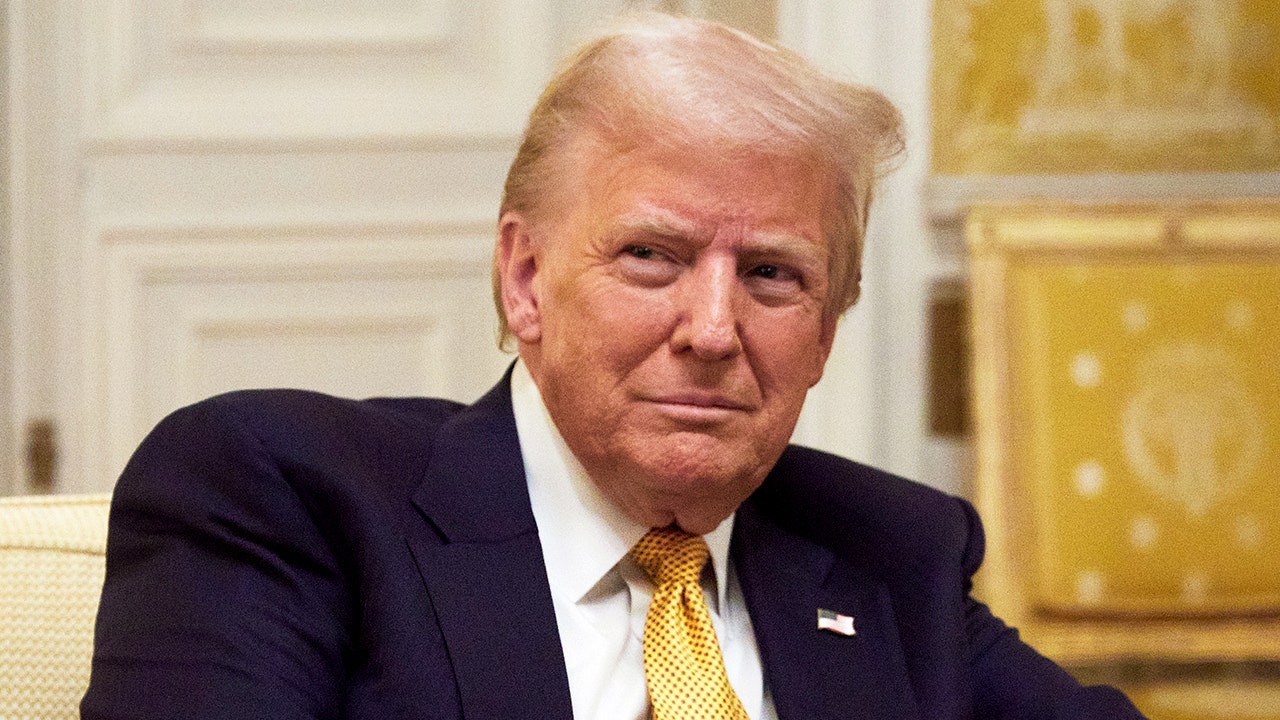I’ve been pretty hard on military firearm training. I think most serious shooters recognize that police and military training isn’t the be-all and end-all of training. It can often be a bit dated compared to the instruction given by instructors on the bleeding edge of individual firearm skills. I typically rail against military firearms training when it comes to credentialism.
Military credentialism is what occurs when someone utilizes their time as a military member to attempt to convince a nonmilitary person of a particular thing. It’s not always bad. It really depends on the subject and the experience of the person touting the information. We typically see one pump chumps saying OLight is the best weapon light ever or using their time in the military to advocate for gun control.

I’m not the only person who sees this and dismisses it. It’s become a common theme in what’s often considered high-information groups. Your average military member is not a weapon expert. That’s a fact. However, today, I want to defend military firearms training and the men and women who make it happen.
The Challenge of Military Firearms Training
Here’s your challenge. I’m going to give you a group of 18 to 23-year-olds, a lot of them have never fired a weapon. The ones who have shot a firearm have no formal training, and it’s unlikely they’ve consistently shot over 100 yards. Here’s a weapon system they are unfamiliar with, with an optic they are unfamiliar with.

The group is about 90 recruits. You’re the primary marksmanship instructor, and here are three coaches. Now, in two weeks, I need you to ensure they qualify at the range and shoot from 200 to 500 yards. Oh, and about 50 of them shoot at one time on qual day. You’re also using beat-to-hell M16s and the cheapest 5.56 the government can produce.
Good luck!
Seriously, that’s not an easy task. Yet, several times a year, all around the country, military firearms instructors do just that. I can only speak for the USMC, but I have never heard of someone failing the training. You can joke it’s due to ‘pit love,’ but in boot camp, at least in 2008, that didn’t exist. No one was risking getting an integrity violation in boot camp.
The coaches and marksmanship instructors do a fantastic job of teaching non-shooters how to put rounds in targets several hundred yards away. That’s not an easy task, and the military firearms training community does a fantastic job of training recruits.
Military Firearms Training and Everything Else
Military firearms training might be dated compared to individualized training. In regular units, it’s tough to apply shot timers to individuals when 30 Marines are firing at the same time. To be fair, the Marine Corps is implementing shot timers into its training. It’s also worth noting that the slightly dated training doesn’t make a huge difference in combat.
Norman Hitchman’s Operational Requirements for an Infantry Hand Weapon found that at 300 yards in combat, the best and the worst marksmen are on the same level. However, the middle of combat doesn’t always provide the best conditions for accurate shooting.

Most ammo is spent suppressing the enemy. Being able to do a perfect C-Clamp and sub-second Bill drill with a rifle doesn’t have a ton of application to a grunt. As a guy in a squad, you are extremely unlikely to ever find yourself to be the only man shooting in one direction, so having extremely tight times isn’t always worth the time investment.
More than Rifle Skills
The average grunt also has to learn a whole lot more than rifle skills. They need to know tactics that trump individual skills. You should be able to operate as part of a squad. They need to learn how to use a radio, shoot grenades, drive various vehicles, fire LAWs, patrol, clear rooms, call for fire, apply first aid, call a casevac, and the list goes on and on.
While individual rifle skills are important to the average grunt, they aren’t the most important skill. It’s also tough to take the time to train individuals at a range when you have close to 200 personnel in a company who have to do the same training. Standard military firearms training just doesn’t have the same time or need as individual training.

Keep Strong
I have seen a slow evolution of military firearm training. We are finally seeing the use of VTAC barriers, shot timers, multi-position shooting, and more. The training is always slow and often led by Infantry Warrant Officers who do good work for our men and women in uniform.
While it’s easy to make fun of military firearms training, it is best to understand the conditions the military trains in and the men and women who work near miracles to train our country’s best.
Read the full article here









